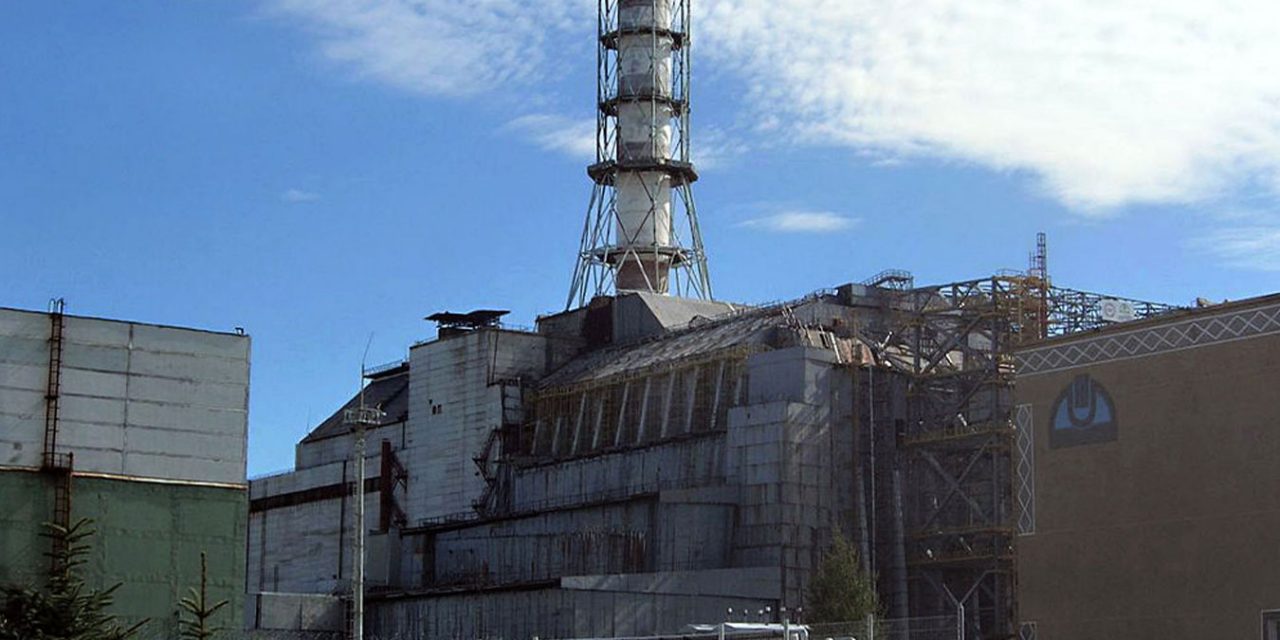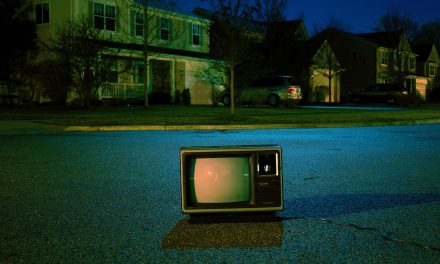Painstaking Research Mazin researched Chernobyl extremely thoroughly before he started writing it. There are several accurate books, written by western and Soviet scientists about what really happened that night at the power station. Some of the Soviet scientists, such as Grigori Medvedev who eventually in the final years of the Soviet Union in 1991, managed to publish The Truth About Chernobyl, personally knew many of the key players at Chernobyl and himself was the chief engineer at the No 1 reactor unit at Chernobyl. Medvedev accompanied Valery Legasov as a special investigator to find out what happened at Chernobyl in 1986. Mazin and the team behind the Chernobyl miniseries created a fictional character, Ulana Khomyuk, played by Emily Watson. In reality, the man who led the team of scientists sent to Chernobyl, Valery Legasov, played by Jarred Harris, was accompanied by dozens of other scientists and engineers. Because it would have been difficult in terms of storytelling to give all these people a voice, it was decided to combine that team of scientists into one character – Ulana Khomyuk. Throughout the show, Legasov, Khomyuk and the politician who is brought round to the truth, Boris Shcherbina, played by Stellan Skarsgard, are constantly forced to defend the truth, the scientific facts against the Soviet power structures, because that truth is too unpleasant. Mazin, unlike many Hollywood writers, made it his business to read many of the books available about Chernobyl and then went over to Ukraine and met with some of the people who had been there and were personally affected by it.
Comedy – Perfect Training for Tragedy
Mazin was also largely a comedy writer, before turning his hand to Chernobyl, and comedy, he explains in an interview with Vox. Being a successful comedy writer or comedian means you must accept and appreciate the truth, no matter how dark and upsetting that truth may be. “A certain kind of comedy survives basically on transgression, and the transgression is only funny if it seems to be poking fun at something that’s true. Even if it’s something that’s awful, it’s true. So, a comedian has to have his or her eye on things that make other people squirm,” said Mazin. Mazin admits that comedy came into play when he was considering how to structure and write Chernobyl; that the events must be seen as they are and not as they should be. This human habit, of bending the truth to see what we want, is something that Mazin wanted to avoid in writing and making Chernobyl. “We’ve seen it in all permutations throughout history, and at the core of it is a certain insistence that what we want to be true is not true, and what we don’t like is now false. That’s not serving us well, and it has never served us well,” said Mazin. He was also adamant that he would not bore people or waste viewers’ time, and in this, his training as a comedy writer was again key. For example, Chernobyl was originally planned as six episodes but Mazin decided to merge two into one to keep the story punchy. Despite the seriousness of the subject, there are many elements of humour in Chernobyl. For example, when the miners, tasked with working in conditions of up to 50’C underground and having been refused any kind of ventilation, take off their clothes completely and are there shovelling radioactive soil completely naked with just their boots and helmets on. There is also something darkly comic about Anatoly Dyatlov, played by Paul Ritter, the man in charge of the safety test that resulted in the reactor exploding. In particular, his absurd denial that the reactor has blown up embodied by his line “not great, not terrible” when in fact he should be getting as many of the power station personnel to safety as possible. “Life is funny, even when things are falling apart, life is funny. Even if it’s a dark and absurdist thing, it’s still amusing in our world,” said Mazin. [caption id="attachment_16696" align="aligncenter" width="1024"] The town of Pripyat 1.5km from the reactor and abandoned after the Chernobyl disaster[/caption]
The town of Pripyat 1.5km from the reactor and abandoned after the Chernobyl disaster[/caption]
Competing Narratives
Even though in pre-production Chernobyl was painstakingly researched, there are some areas of what happened where there are competing narratives, where oral accounts and written testimony do not always agree, and this faced the Chernobyl production team with a problem. One striking example of this was the story of the divers who went into tanks underneath the burning reactor to physically open valves and sluice gates so the water could drain away. By doing this, they prevented a huge steam explosion, similar in power to a hydrogen bomb, which would have blown up the other three reactors at Chernobyl and have made most of Eastern Europe uninhabitable. The story that is widely told, even in many reputable books and newspaper articles, is that the three men who went into the water were completely submerged and had to swim through the radioactive, pitch black water like scuba divers and that they all died two weeks later. But with about six months to go until shooting, Mazin came across a book by the writer Andrew Leatherbarrow, who had done further research on this and found that not all of them did die. In fact, two of them were still alive and that they were never fully submerged in the water. Mazin checked this out and found out that they were indeed still alive and so changed the story to fit the truth. [caption id="attachment_16697" align="aligncenter" width="1024"] Pripyat, evacuated in 1986[/caption]
Pripyat, evacuated in 1986[/caption]
A Human Story That Could Happen Anywhere
Mazin was clear from the outset that although the story takes place in the Soviet Union, he didn’t want to tell a story that was anti-Soviet, but rather make a story that embraces all humanity and its many weaknesses. “It’s the story of the Soviet Union, but the danger is you make the story about how the Soviets were a bunch of liars. And it became clear to me that Soviets are just people, and we’re just people, and lying is not in the water over there,” said Mazin. Mazin tells Vox something that many people, including this author, who have lived in former Soviet countries such as Russia and Ukraine, are all too aware. Whereas in virtually all western countries there is a cultural history going back hundreds of years of mocking our politicians and leaders, in many former Soviet countries this is not the case. Whereas the press there has been either muted or practised a good deal of self-censorship, in western countries the press has in some cases behaved admirably in uncovering the scandals and lies of the leadership, just as it has also often behaved poorly. The result is that in the Soviet Union there was no deep-rooted tradition of cultural self-mockery. This attitude continues today in Russia and Belarus, although in Ukraine and the Baltic countries, there tends to be more cultural self-mockery, as well as a more truthful telling of difficult bits of national history. Russia, in particular, feels insecure and that the rest of the world makes fun of them and treats them poorly. To a certain extent, they feel humiliated by their past, while at the same time feeling that their huge sacrifice in World War Two, has not been acknowledged by the West. This attitude can be seen by the official reaction in Russia to the Chernobyl miniseries. Russia is now making its own film about Chernobyl, in which it is blamed on a CIA agent, who tries to sabotage the power station, and the efforts of the KGB to smoke him out. This rewriting of history to cover up uncomfortable facts, while blaming other people for their own mistakes, is something which happened in the Soviet Union and is happening again in Russia now. “I did expect a certain level of propaganda from the Russian government, and after all, the man who runs that government is ex KGB. They’re putting out their own Chernobyl narrative, which I think is based around a KGB officer trying to stop a CIA officer from doing something, and sure, I figured that was coming, I get it,” Mazin told the Hollywood Reporter. [caption id="attachment_16698" align="aligncenter" width="1024"] The former swimming pool in Pripyat[/caption]
The former swimming pool in Pripyat[/caption]
Positive Response from Those Who Were at the Coal Face
But in fact, the HBO Chernobyl miniseries is widely available in Russia and has already been translated into Russian. By and large, the majority of responses from people across the former Soviet Union, including Russia, has been positive. Mazin admits he was nervous about how the Chernobyl miniseries would be received in Eastern European countries that bore the brunt of the accident when it happened over 30 years ago. “The overwhelming response has been incredibly gratifying. They recognise that we made this with love and respect for them, and we tried our hardest to get the details right, which I think from their perspective western productions often fail to do or don’t try to do at all,” said Mazin. The Chernobyl crew went to great lengths to get the details of the period right. Some Russian reviewers that snipe at some of things they got wrong, such as the fact that nobody would have flown in a helicopter from Moscow to Chernobyl, seem to be completely missing the point, while also seeming to be unaware that films are made on strict budgets and that there may not be the resources to show everything you’d like to. Most of Chernobyl was filmed in Lithuania, with a little bit in Kiev, Ukraine. All the stuff that is meant to be in the Chernobyl power station was filmed at Chernobyl’s sister plant at Ignalina, which had exactly the same type of reactor, the RBMK, that was used in Chernobyl. All the clothes and military uniforms were made to look exactly like the originals people wore in 1986. “Every bit of clothing, suits that we made for Jared Harris and Stellan Skarsgard, were made from bolts of cloth that were taken from the ‘80s. They were vintage cloth from Soviet 1985,” explains Mazin. [caption id="attachment_16699" align="aligncenter" width="1024"] The former maternity clinic[/caption]
The former maternity clinic[/caption]
Science, Not Conspiracies
Mazin is very clear that Chernobyl didn’t explode because of bad luck, or because the CIA was trying to discredit the Soviet nuclear program, but because of science, and he was absolutely determined that this was properly explained to viewers. “It doesn’t happen because you were doomed, or because of fate. It happens because of science. Facts. And if it happens because of science, that means if we pay attention to science, we can avoid it happening,” said Mazin With this adherence to the scientific facts, comes a responsibility from any storyteller to relay a message that holds the cost of ignoring science up to the audiences’ faces. “The point is not to wallow in sorrow porn. The point is to say we have a responsibility for that sorrow to not occur again. That’s why we made the show,” he said. What happened at Chernobyl, where the people in charge ignored the warnings, is an analogy for what is happening in the world today. Despite numerous warnings from scientists that the world is heating up and that we may soon be unable to stop climate change, we still carry on burning fossil fuels at an ever-greater intensity. This year the production of CO2 by human’s is higher than its ever been. “We’re unfortunately those guys in the control room going, “Well, the one thing we don’t have to worry about is this thing blowing up.” That’s us, on this planet, right now,” Mazin explained. This is why the fifth episode is in many ways the most important. Mazin admits that this was his biggest writing challenge in the entire project. Rather than begin with why the reactor exploded, Mazin thought it would be more compelling if he started with the explosion and then once the audience has got to know and care about the characters, only then at the end tell them the crucial reasons of why it happened. In the Chernobyl Podcasts Mazin explains that the trial as it is seen in the film did not happen like that in reality. Although the two managers of the plant Bryukhanov, Fomin and Anatoli Dyatlov, the senior engineer who was in charge of the reactor that night, were put on trial, Legasov and Shcherbina were not there. But as Mazin explains, “I can’t tell the story without them being there because nobody’s going to want to watch that.” In the actual trial in 1987, Bryukhanov, Fomin and Anatoli Dyatlov were sentenced to several years of hard labour for their responsibility for the Chernobyl disaster. However, the three men were to some extent used as scape goats in what was to be the last show trial of the Soviet Union and the fundamental design flaw of the RBMK Chernobyl type reactor was not dealt with. But Mazin explains, that’s why he says in the podcast what the real truth was, which is not narratively interesting. The trial also gave Mazin the opportunity to explain to the viewer the exact reason why the Chernobyl power station exploded. “I needed to explain something that is complicated. Its nuclear physics and power plant engineering. So, we worked really hard, we went through that stuff line by line to make sure it was clear and that there weren’t any unnecessary things, but that we weren’t leaving anything important out either,” explained Mazin. And this is why the podcast is important because people will hopefully no longer question whether they got everything in the film completely right. A film, and now many TV series, are works of art. Art must be truthful but can never get everything right all of the time. “We can’t get it right; we can only get it sort of right. That’s the best we can do,” said Mazin.]]>- Why is California So at Risk from Wildfires? - 13th November 2019
- Carbon Offsetting is Growing but Does it Make a Difference? - 11th November 2019
- Three Confirmed Dead as Australia Prepares for “Catastrophic” Bushfires - 11th November 2019






